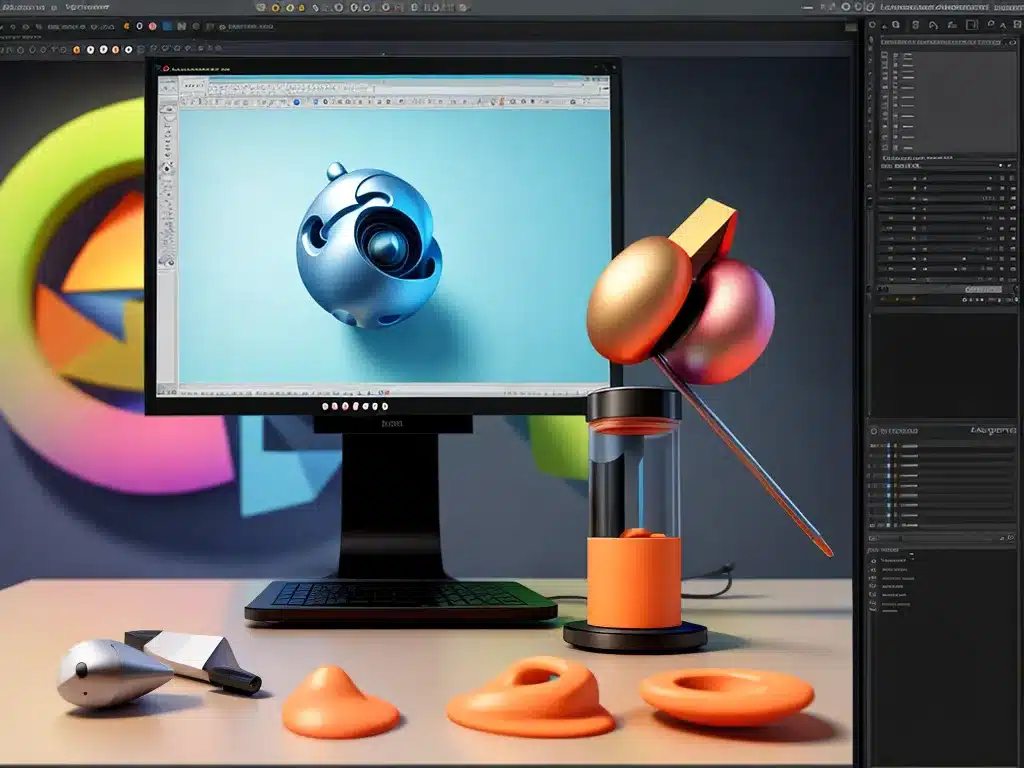
Blender 3.0 is finally here! As an artist and designer myself, I am thrilled by the major improvements in this release that will make my workflow smoother, faster, and more intuitive. In this in-depth article, I will highlight the key enhancements in Blender 3.0 and why they matter for artists, designers, and other creatives.
Faster Viewport Performance
Upgraded Real-Time Render Engine
One of the most noticeable changes in Blender 3.0 is the upgraded real-time render engine, Eevee. Eevee is now up to 2x faster thanks to heavily optimized shadow calculations, transparency handling, and better use of modern GPUs.
As an artist, this means I can now get real-time feedback on complex scenes and lighting setups that previously choked up the viewport. The faster viewport lets me iterate and explore creative ideas much quicker.
Improved Viewport Denoising
Blender 3.0 also introduces Intel Open Image Denoise for the 3D viewport. This means noisy renders from Eevee and Cycles now get cleaned up in real-time so I can focus on the overall lighting and shading rather than noisy artifacts.
The viewport denoising makes it much easier for me to set up renders, materials, and lighting workflows when working on complex scenes.
Enhanced Asset Workflow
Faster importing and exporting
Blender 3.0 introduces the USD format for importing and exporting entire scenes and assets. USD is an industry standard format optimized for large scenes with many assets.
I can now import and export complex scenes with thousands of assets much faster in Blender. This improves my workflow when working with large sets for film, animation, and arch-viz projects.
Better Alembic support
There are also major improvements to the Alembic importer and exporter. Alembic is commonly used to transfer animated assets between 3D software.
The updates in Blender 3.0 provide smoother importing and exporting of complex Alembic sequences. This saves me time when working with animated assets from other software.
Improved UI for Asset Libraries
Managing hundreds of assets in a scene is easier with the new integrated asset browser UI. I can now quickly search, filter, and organize assets without the need for third-party add-ons.
For complex projects, having robust asset management tools built right into Blender helps me stay organized and work faster.
More Intuitive Sculpting Tools
Mask Brush for focused sculpting
My favorite new sculpting feature in Blender 3.0 is the Mask brush. This lets me paint a mask onto the mesh and then control which parts are affected by other brushes.
The Mask brush gives me more precision and control while sculpting. I can focus only on specific parts of the model without worrying about accidental changes to other areas.
Improved brush cursor and falloff
Sculpting highly detailed organic models is smoother now thanks to the improved brush cursor and falloff. The cursor provides a more accurate preview of the brush shape and falloff lets me control how brush effects fade out.
With these upgrades, sculpting complex surfaces and shapes feels much more intuitive. I spend less time fighting against the brushes and more time focused on the actual modeling.
Better subdivision editing
Editing subdivision surfaces is also easier now with the new Subdivide Smooth and Subdivide Catmull-Clark options. These provide clearer previews when working with subdivision models.
I rely on subdivision modeling for most of my high-poly sculpted assets. The enhancements in Blender 3.0 bring this workflow in line with other major 3D software and make it more artist-friendly.
What this Means for Artists and Designers
For artists, designers, and creatives who rely on Blender in their workflows, the upgrades in Blender 3.0 add up to a huge boost in productivity and creativity.
The snappier viewport, better asset handling, and enhanced sculpting tools directly translate to me working faster and having more time for actual creativity versus fighting against software limitations.
While some changes like USD and Intel denoising cater more toward large studios, most of the improvements will benefit individual artists and small teams. Whether working on film VFX or game assets, product designs or architectural viz, Blender 3.0 marks a major leap for the 3D toolset.
I’m excited to take these latest features for a spin and can’t wait to see what the Blender development team has in store next. With Blender’s rapid progress coupled with its open-source ethos, the future is bright for artists and designers!












